Explain :
(i) μofNH3>NF3
(ii)μofCO2 is zero, nut μofSO2≠0
(iv) Why the lone pair of ¯e,s has no effect on the μ of PH3. The bond angle in PH3 is 92∘.
(v) μofCH2C12>CHC13.
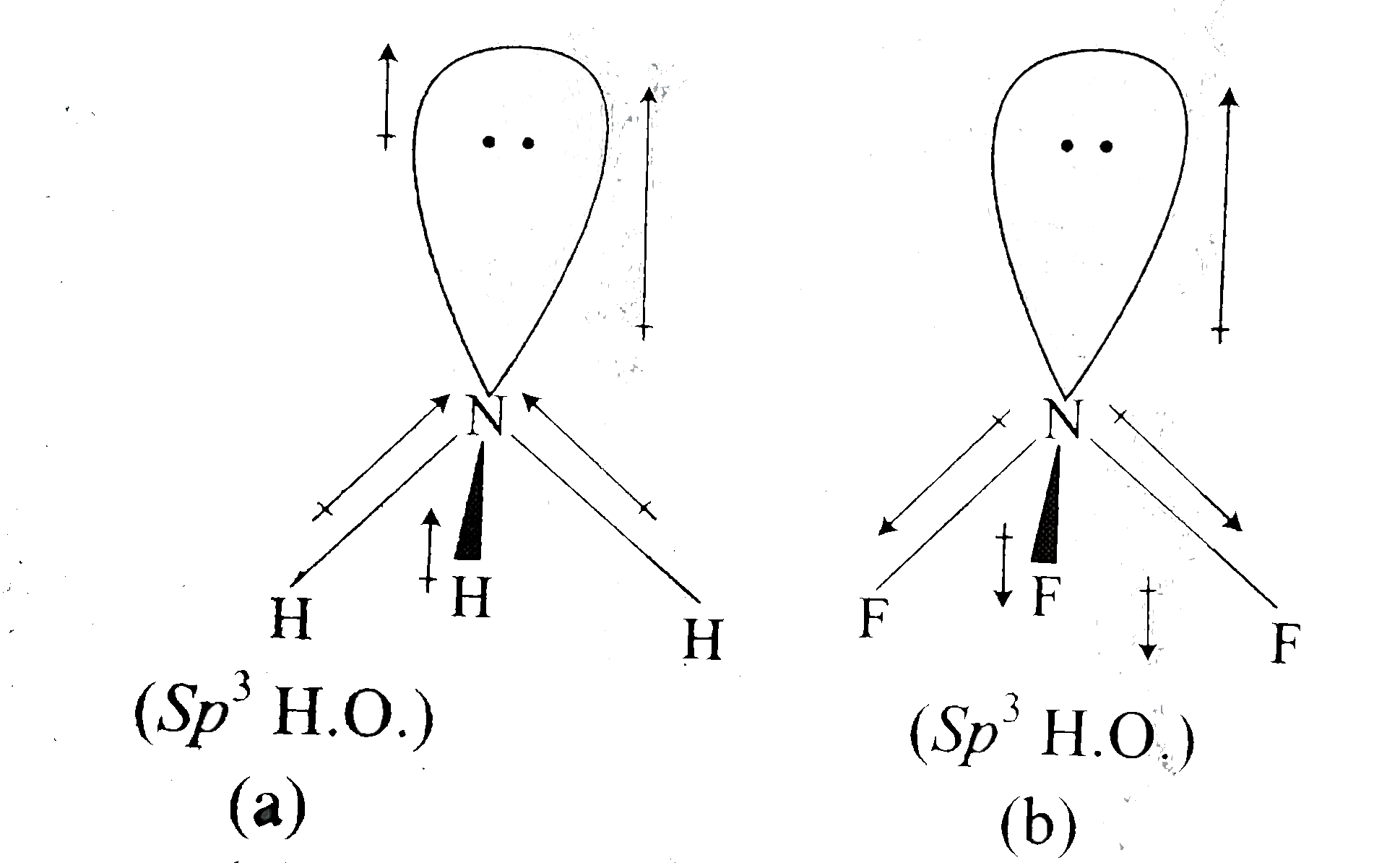
(Fig) Lone pair electrons :
(a) NH3 and
(b) NF3
In NH3, the net moment of (N−N) bonds and the contribution from the LP¯e,s (lone pair ¯e,s) are in the same direction and are additive [Fig].The net moment of the (N−F) bonds opposes the dipole effect of the LP¯e,s in NH3 and the resultant is less μ. So μ of NH3>NF3.
(ii) The electronegativities of halogens decrease form F to I, so μ of HG>HC1>HBr>H1. But μ of CH3F is smaller than CH3C1 due to shorter (C−F) bond distance, although EN of F is greater than that of C1.
(iii) In CO2,C is sp hybridised and linear. The bond moments of (C−O) are equal and in opposite directions and cancel each other. Hence, μ is zero.
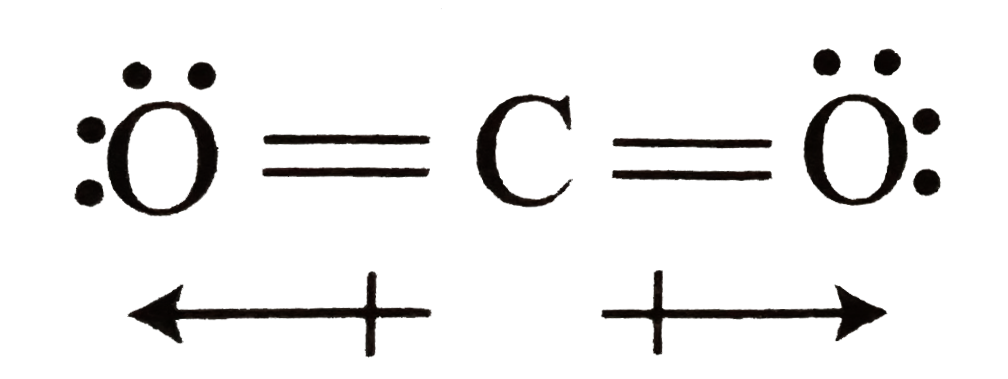
In SO2,S is sp2 hybridised having one LP¯e one S atom. The (O−S−O) bond angle is nearly 120∘,(S−O) bond moment does not cancel and shown a net resultant μ.

(iv) The 92∘ bond angle suggests that P uses three p atomic orbitals in forming bonds with H, with one LP¯e in 3s atomic orbital, i.e., P in PH3 is sp2 hybridised (unlike NH3, in which N is sp3 hybridised).
Therefore, due to the presence of LP¯e,s in 3s atomic orbitial of P, which is spherical symmetrical, the polarity of the molecule is not affected. In order to affect the polarity of the molecule, EN of P and H are nearly same, so PH3 molecule is almost nonpolar.
(v) 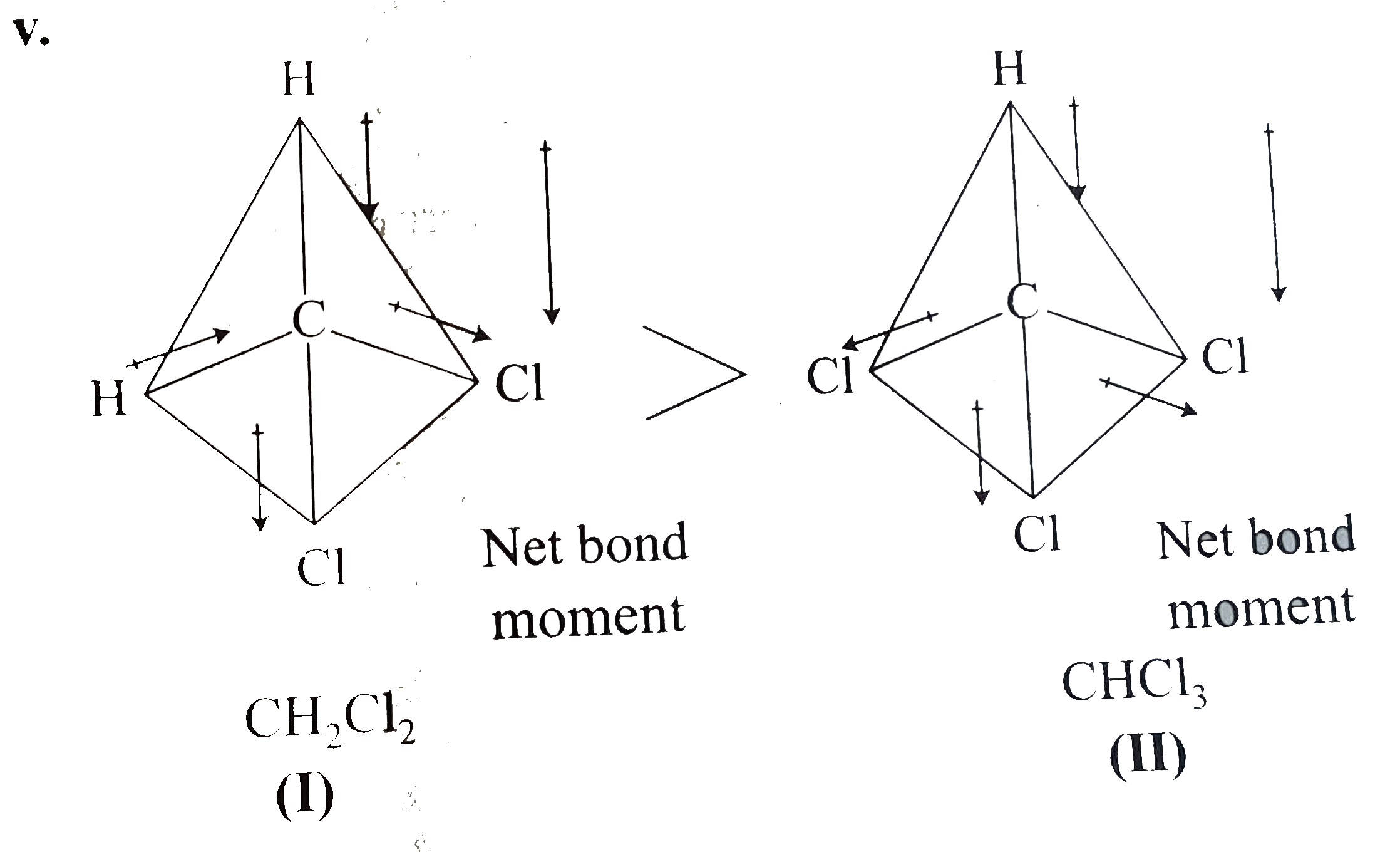
In (I), all bond moments are in the same direction, so they are additive and the net resultant μ is more than (II).
In (II), the bond moment of one of the C1 atoms opposes the net moment of the other two, so the net resultant μ is less than that of (I).
Topper's Solved these Questions
- BOOK - CENGAGE CHEMISTRY ENGLISHCHAPTER - GENERAL ORGANIC CHEMISTRYEXERCISE - Solved Example18videos
GENERAL ORGANIC CHEMISTRY
- BOOK - CENGAGE CHEMISTRY ENGLISHCHAPTER - GENERAL ORGANIC CHEMISTRYEXERCISE - Subjective11videos
GENERAL ORGANIC CHEMISTRY
- BOOK - CENGAGE CHEMISTRY ENGLISHCHAPTER - CLASSIFICATION AND NOMENCLATURE OF ORGANIC COMPOUNDSEXERCISE - Analytical and Descriptive Type3videos
CLASSIFICATION AND NOMENCLATURE OF ORGANIC COMPOUNDS
- BOOK - CENGAGE CHEMISTRY ENGLISHCHAPTER - HYDROGEN, WATER AND HYDROGEN PEROXIDEEXERCISE - Subjective Archive (Subjective)3videos
HYDROGEN, WATER AND HYDROGEN PEROXIDE
Similar Questions
In the figure shown, μ1>μ2>μ3. What are the limits of angle i so that it is neither get total internal reflection at AB nor at CD ?
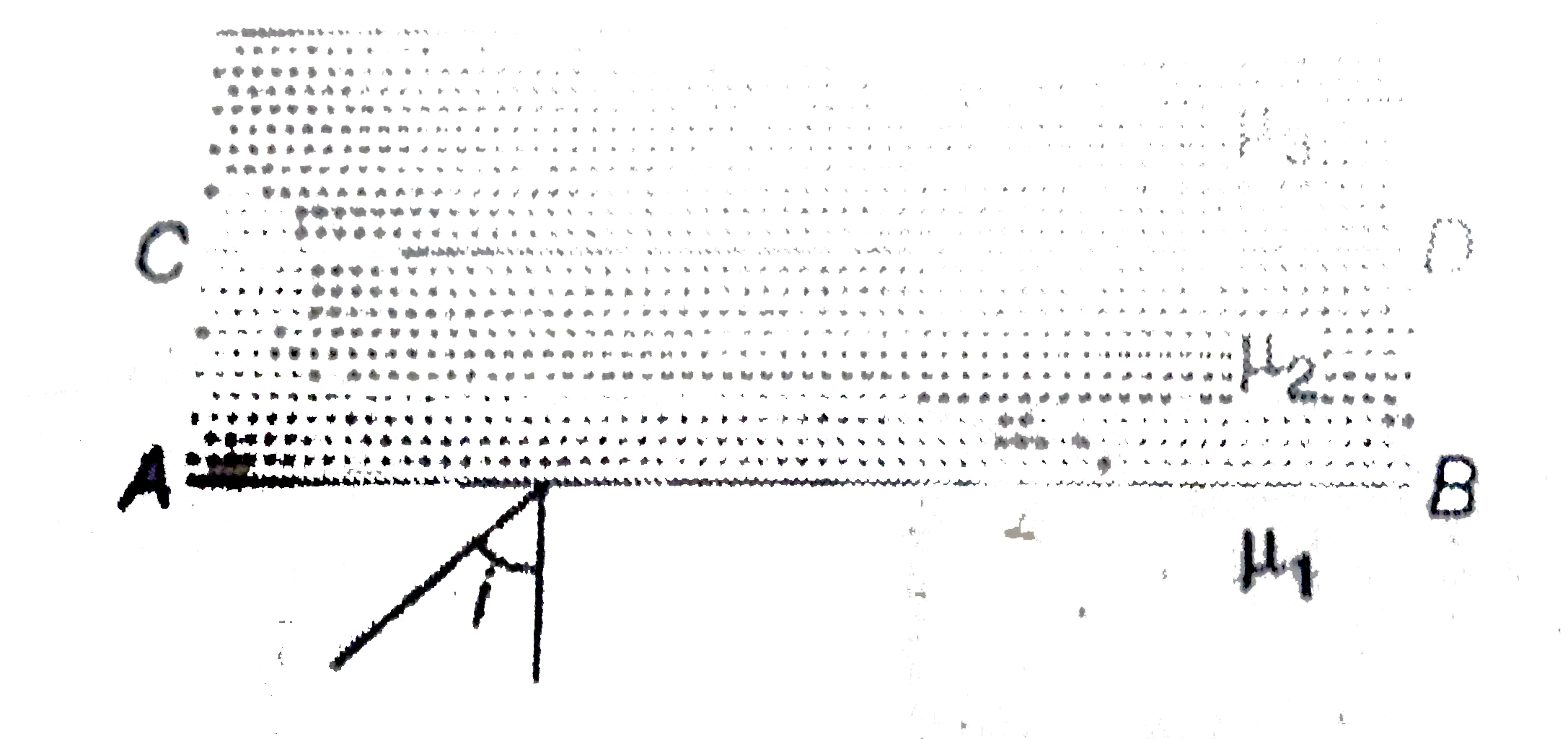 View Solution
View SolutionGive the order of acidic character of the following :
(i) (a) Ph3CH
(b) Ph2Ch2
( c) PhCH3View SolutionIn the circuit below C1=20μF , C2=40μ F and C3=50μ F . If no capacitor can sustain more than 50 V, then maximum potential difference between X and y is
 View Solution
View SolutionIn given circuit, ratio of charge on 2 μF capacitor to the charge of 3 μ F capacitor will be
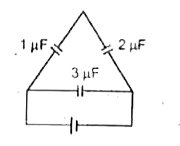 View Solution
View SolutionThere are two charges +2μC and −3μC. The ratio of forces acting on them will be
(1) 2:3 (2) 1:1
(3) 3:2 (4) 4:9View SolutionIn the arrangement C1=10μ,FC2=10μF and C3=20μF . What is the equivalent capacitance ( in μF ) between points A and B ?
 View Solution
View SolutionFrom the figure shown, establish a relation between μ1,μ2,andμ3
 View Solution
View SolutionEach myofibril has a diameter of
(a) 1 to 2 μm
(b) 0.1 to 0.2μm
(c) .001 to .002μm
(d) None of the aboveView SolutionWhat is total modulation index when a carrier wave is modulated by a number of sine waves having modulation index μ1,μ2,μ3,…….μn?
View SolutionConversion of CH3CHO to (CH3)2C(OH)Ph
View Solution

